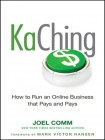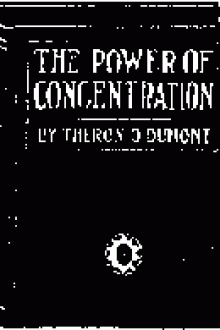KaChing: How to Run an Online Business that Pays and Pays Comm, Joel (books for 8th graders txt) 📖

Book online «KaChing: How to Run an Online Business that Pays and Pays Comm, Joel (books for 8th graders txt) 📖». Author Comm, Joel
What really got me interested was Morgan James’s business model. Morgan James (www.MorganJamesPublishing.com) produces traditional books, but it doesn’t act in a traditional way. Instead, it produces “entrepreneurial books,” which bridge the gap between traditional publishers who produce books by taking all of the risk and in return giving authors a tiny share of the sales, and vanity publishers (aka self-publishers) who give authors all of the profits but also a giant financial risk (and none of the prestige).
As with self-publishing, you will have to reach into your pocket to publish with Morgan James. You’ll have to pay for the design work, the editing, and the printing (although that also means you maintain control, whereas in traditional publishing, you don’t even get the last word on the book title). That might cost you around $4,000, give or take. But unlike the self-publishing companies, Morgan James hasn’t yet earned a penny. The company starts to make money only when your book starts to sell, so it won’t give you a pile of books and leave you to it. Morgan James helps you to market the book as well. Most important, it does that by using the Ingram Book Group, a wholesaler and distributor—and the main channel for any book that wants to reach mainstream bookstores (Figure 4.2).
Figure 4.2Morgan James will publish your book, put it in stores, and help you with the marketing.
Produce your book with Morgan James, and you will be able to see it in your local bookstore.
There are other benefits, too. Because you’ve taken on more of the risk, you’ll not only have more control, you’ll also have higher rewards: Royalties at Morgan James are as high as 20 percent of the sales price, much higher than anything you can find in traditional publishing. And you get to keep the rights to your book.
That’s very important. It means that you can put the same material on your web site, in e-books, and even turn it into a course if you want without receiving legal letters from a publishing company highlighting the clauses in the giant contract you signed that prohibit you from earning from your knowledge in any “unauthorized” way.
Morgan James, however, isn’t open to everyone. The company receives about 4,500 manuscripts each year... and produces about 163. In terms of rejection, it’s not too different from a traditional publishing company. But if you have a good idea, and if you’re serious about creating and promoting the book, then it can deliver some huge benefits for entrepreneurial authors-business-minded people who want to help other business-minded people succeed.
The print book that I agreed to create with David Hancock went on to become a New York Times best-seller, giving me the kind of prestige and profile that I could never have earned any other way.
Morgan James can propel rising entrepreneurs to a whole new level. It’s like giving your store a complete makeover, moving it up from a high-end shopping mall to a swanky Fifth Avenue boutique. You’re still making money. You’re still pushing buttons and hearing KaChings. But people look at you differently.
Morgan James is very selective and demands an investment from its authors. It’s not right for everyone. There is an alternative, though. Printing technology has now evolved to a point where it’s possible to produce a single copy of a book and still make the effort financially worthwhile. Some of the companies that do the printing are even plugged into the main book distribution systems, enabling you to create a book and put it on Amazon and even in stores without having to fill your garage with boxes of unsold books. Not only will you be able to sidestep the big publishing companies standing in the way of your printed book, you’ll be able to become your own publishing company, producing your own books with practically no up-front costs at all.
I had the opportunity to interview David Hancock regarding the entrepreneurial publishing model. You can download the MP3 audio at www.MadeEasyPublishing.com.
You create the book and then promote it on your web site and through affiliate networks. But the book isn’t printed until the order is received.
A number of companies offer services like this. Lulu (www.lulu.com) is perhaps the easiest and offers a wide range of different kinds of books, from publisher-grade soft-cover to case-wrapped hard-cover versions. The printing costs depend on the kind of book you want and the number of pages, but start at $5.30. Because you can set your own price, you’re guaranteed to make a profit on every sale. Amazon has its own self-publishing arm at CreateSpace (www.createspace.com).
If you want to kick it up a bit, Lightning Source (www.lightningsource.com) works with some of the world’s biggest publishing companies. You have to apply to join its program, so it’s a bit selective, but this company is also plugged into Ingram’s, so you’ll have an easier time getting exposure, both in bookstores and online.
The advantages of print-on-demand should be clear: There’s no risk, and you’re in control. The disadvantage is that because it’s not as selective as traditional publishing, it’s also not as prestigious. It can, however, make a useful alternative to an e-book for buyers who prefer to hold their books in their hands (Figure 4.3).
Figure 4.3Photopreneur (www.blogs.photopreneur.com), a blog that helps photography enthusiasts earn from their hobby, earns revenue with its print-on-demand photography book.
Finally, when it comes to creating print books, there’s always traditional publishing. Because traditional publishing is so selective, it’s probably best to think of approaching major publishers as the last step on the ladder. You’ll find it much easier to get agreement for your book idea if you can already show that people are buying your e-book or your print-on-demand book, if your blog has lots of readers, and if you already have a following. At that point, the publisher can see that your knowledge has value and that people are willing to pay for it. You represent a much





Comments (0)